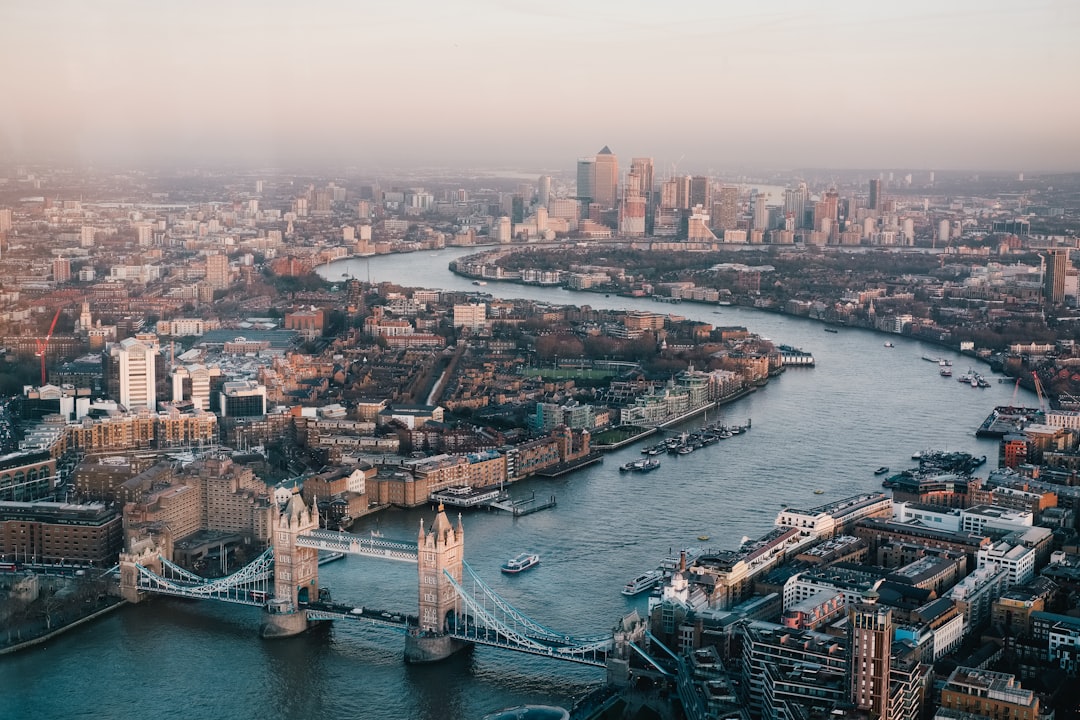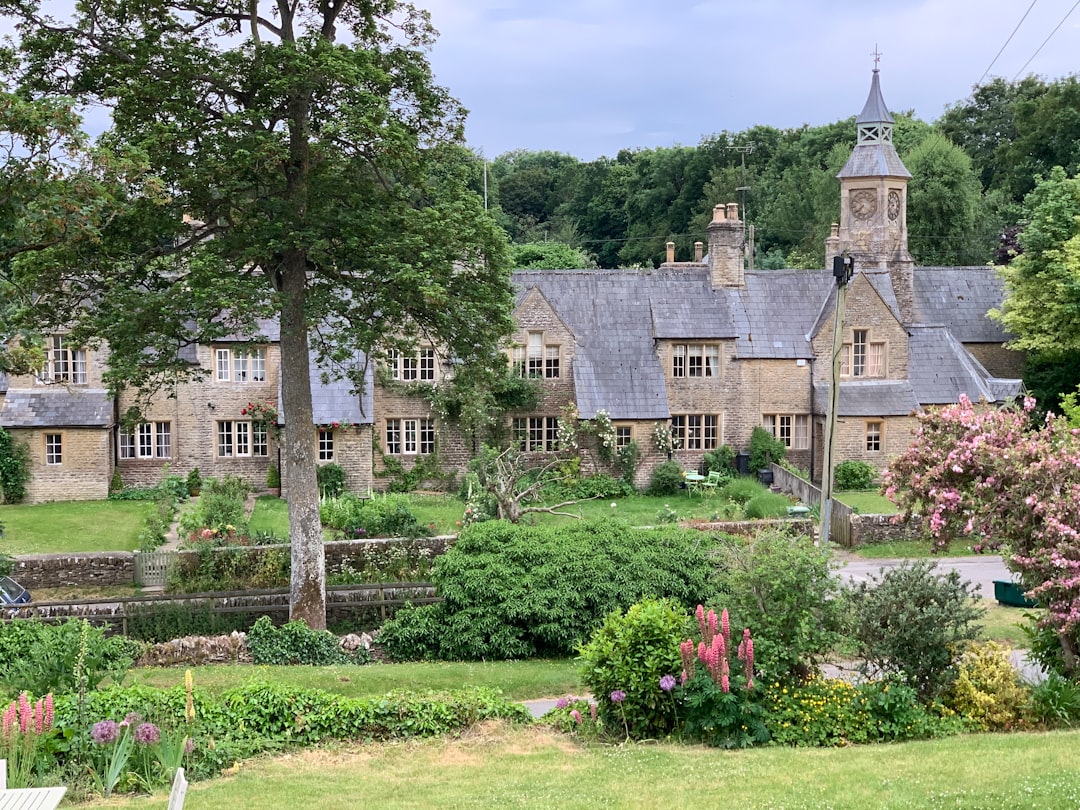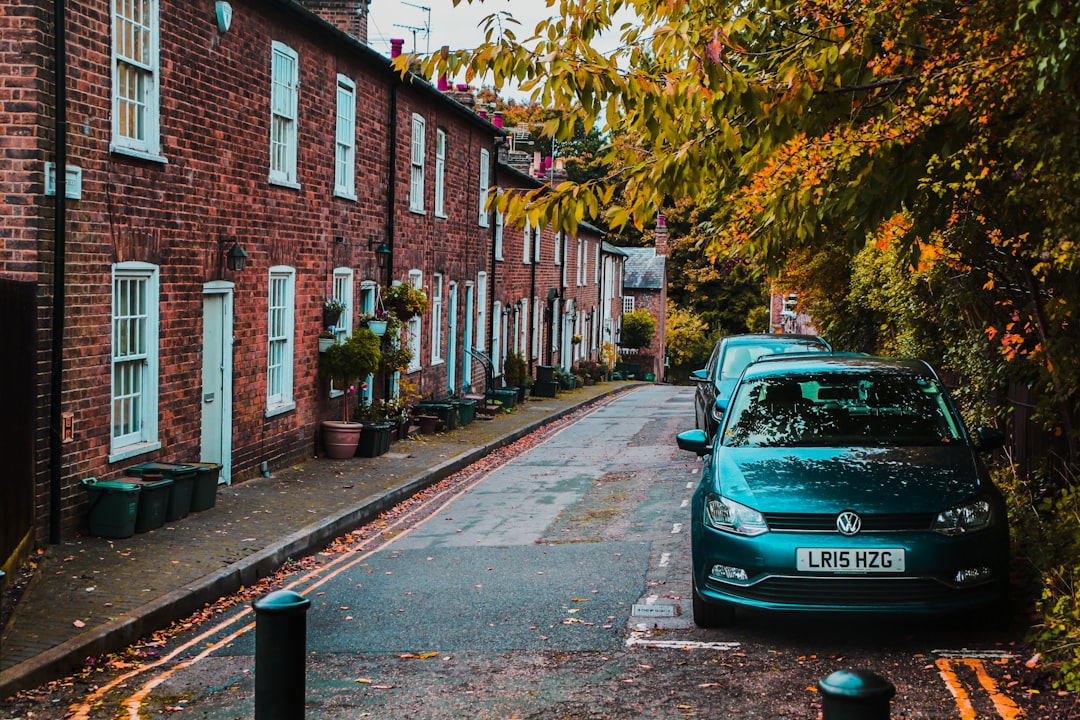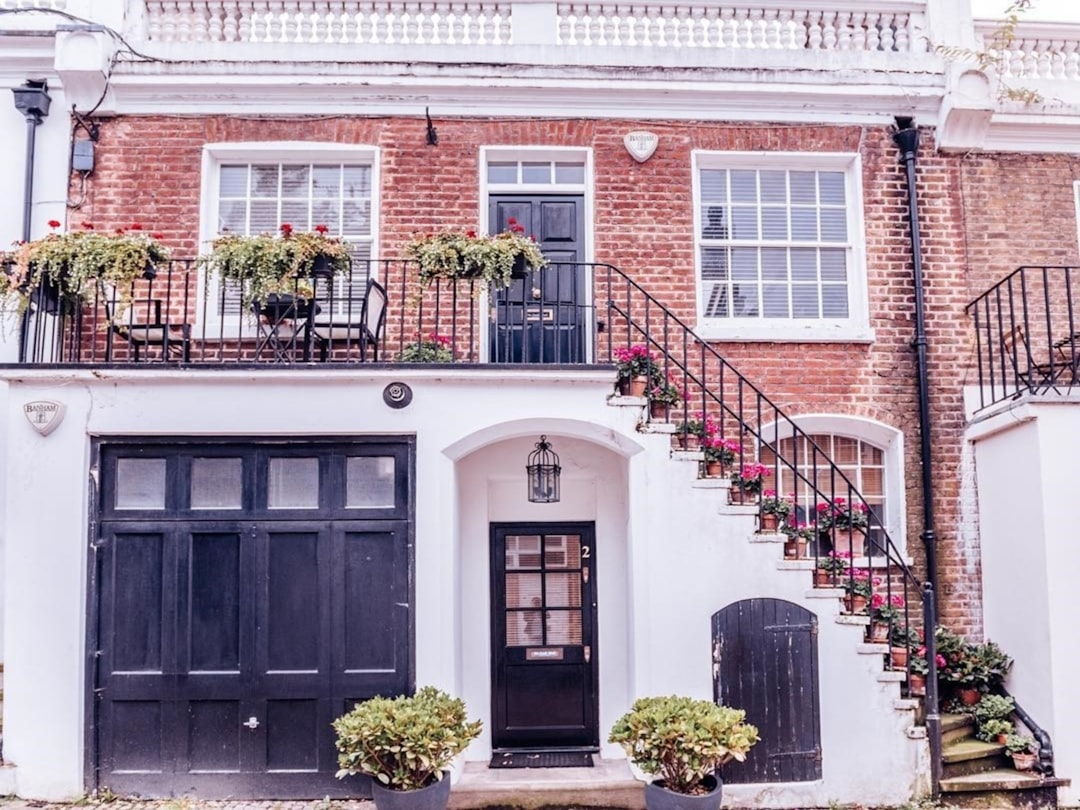As regular readers of my stuff will know, I’m of the view that a society should be designed around direct democracy and very low levels of land value tax (LVT), what Milton Friedman called “the least bad tax”. I may dream of Ancapistan, a land of no government, but the reality is that taxation of some kind, even if it be voluntary, is inevitable. There has never been a civilisation without taxation.
Ideally, land value tax would replace ALL other taxes. However, if you offered me LVT in the UK and all other taxes, income tax especially, slashed to 10, 15 or even 20%, I’d bite your hand off.
My friends in the countryside hate the idea, and I get angry messages about it, but the reality is that it is the owners of prime city centre real estate, the likes of the Crown, the Grosvenor Estate, major institutions and so on, who would bear the brunt, not ordinary homeowners or someone with 10 acres of field with no planning permission. (In my book Daylight Robbery, I argue for location value tax - it’s the same as land value tax, but I use the word “location” because the location of the land - ie city centres - is more important than the actual amount of land).
In any case, LVT is not going to happen here in the UK. Introducing a major new tax is too big an undertaking. It’s easier for politicians to raise and lower the taxes they already impose, and tinker round the edges of the existing system. LVT would be a whopping vote-loser in a nation whose primary concept of wealth is the value of their house. Just explaining it, never mind getting it across the line, is hard enough. (If you want an explainer, by the way, there is one here and another here).
Anyway this is all pre-amble, and I’m not here today to discuss the merits - or lack thereof - of LVT. For the purposes of this blog, just take my word that LVT keeps the relationship between ruler and citizen, between governor and governed, in healthy, transparent check. With LVT you would pay fewer taxes and lower levels of tax - ie less tax overall.
So I’ve been trying to come up with a politically possible means by which
LVT can be implemented and shown in practice to work
Beautiful housing can be made affordable to ordinary people without collapsing the housing market or having to reform the fiat money system
Corporations, particularly crony capitalist building companies, planners, regulators and government are kept out of it, and people can be left to their own ingenious devices
And, by George, I think I’ve got it.
Here’s my idea. I stress: it is just an idea I am working through so there are bound to be flaws. I’d be grateful for any comments, pointers, thoughts, statistics, data, and so on.
Water Location Value Tax
Summary:
Today’s unaffordable housing is a consequence of both our system of planning and our system of money. They have conspired. But wholesale reform to either as good as politically impossible. With Britain’s over-leverage to housing, the financial repercussions of markedly lower house prices are politically intolerable.
Instead we propose to bypass the housing market altogether with an initiative to re-populate the underused rivers, keys, docks and canals of Britain with houseboats, barges and floating homes.
Local authorities and the land registry will determine who “owns” the water and the land beside it (most water is nationally owned). That which is not needed for transportation (eg the middle of rivers) will be parcelled off into small plots to be sold to individual owners – not corporate entities – on which they can then build or buy, then moor floating homes and other edifices.
An annual Water Tax will then be levied along the lines of Henry George’s Single Tax (land value tax), based on the rental value of the plot, payable to the local authority and to the body in charge of the waterway, usually the Canal River Trust.
20 housing ministers since 1999
The unaffordability of housing has been for twenty years or more one of the biggest issues in the country. As if to illustrate the priority this problem is being given in Whitehall, we have this:
In fact, we have had two more, since Esther McVey and this chart: Christopher Pincher Stuart Andrew and Steward Andrew. I make that 20 different housing ministers since Hilary Armstrong in 1999. It’s not what you would describe as evidence of a long-term strategy.
It seems absurd that we should have any crisis at all. A house does not cost a lot of money to build. In China it has long been the case that a 3D printer can build a home in a day for about £3,000.1 Here in the UK you can buy a flatpack 3-bed house, which takes 6-7 hours to erect, yours for £24,000.2
The interior of one of architect, Renato Vidal’s 3-bed, flat-packed homes, £24,000.
Meanwhile, there is no shortage of land. Little more than 4% of the land in England and Wales is built on, even less in Scotland.3 This was the finding of the National Ecosystem Assessment in 2011: just 1.1% of rural and urban land in England and Wales has domestic property on it, another 1% has commercial property and 2% is roads. The rest – around 95% - is not built on.4 You could, in theory, double the housing stock of England and Wales, using little more than 1% of land. (It is more complicated than that but you take my point).
How on earth have we got into the situation that in 21st century Britain almost an entire generation is “priced out”?
Underlying cause of high house prices number one – money supply
Between 1997 and 2007 the population grew by 5%, yet the housing stock grew by 10%.5 If house prices were a simple function of supply and demand, they would have fallen slightly over the period. Instead, they tripled.6
Mortgage lending over the same period went up by 370%.7 It was the increased supply of money, which caused house prices to rise.
Money supply increased at a rate of roughly 11.5% per annum in the 40 years between 1971 and 2011.8 Some 40% of it went into residential and commercial property.9 Roughly speaking, house price inflation mirrored money supply growth.
The Bank of England has a remit to curb inflation, but it does not include house prices or money supply growth in its standard measures, and so house price inflation went unchecked. If interest rates had reflected 11.5% annual money supply growth, house price inflation would have been stopped in its tracks.
Underlying cause number two – planning
Planning laws are the second part of the problem. The newly created money poured into a market which had limited ability to expand.
The 1947 Town and Country Planning Act, passed by Clement Attlee’s Labour Government, became the foundation of modern town and country planning in the UK, followed by new statutes in 1990 and 2004. It was founded on the laudable aim “that all the land of the country is used in the best interests of the whole people”.10 What happened, however, was that it became difficult to get permission to build anything, so the act had the effect of reinforcing the monopoly of the landowner.
Today, just 6,000 or so landowners (the Crown, large institutions and a few rich families) own more than 70% of UK land.11 Most people do not have the time and resources to navigate planning laws, so house building has become the preserve of a few large corporations. An acre of rural land worth £10,000 becomes an acre of land worth as much as £1m once it has planning permission.12 This is an expensive and utterly needless cost of government, and it goes a long way to explain why house prices are so much higher than build prices.
The act led to huge concentrations of both people and capital in areas that were already built up – especially London – and brought vast, unearned wealth to those who owned at the expense of those who didn’t.
Our most beautiful domestic architecture was predominantly built in the 18th and 19th century, before planning laws. The more planning there is, the uglier buildings seem to get. This is causation not correlation: it is inevitable when the final say on creative decisions is in the hands of planners. Imagine Van Gogh needing regulatory approval on a painting.
Here are some nice houses built before planning laws.
Why this housing crisis is unsolvable
To solve the crisis requires two things: money reform and planning reform. Both are such huge undertakings with such opposing vested interests as to be almost unachievable.
As a nation, Britain is over-leveraged to housing. Too many people have too much money tied up in their house. The economic risks of significantly lower prices are high.
What party standing for lower house prices would even get elected? Homeowners are more likely to vote than renters. The house price crash of 1989-94 was a major factor in making the Tories unelectable for half a generation. No party wants such a fate.
A land value tax, along the lines of the Single Tax suggested by Henry George, would go a long way to resolving many of the housing market’s distortions, but there is as little chance of that as there is of money and planning reform. Politicians promising new taxes when there is no national emergency tend not to be popular. Margaret Thatcher’s Community Charge is one of many examples.
There is an impossible deadlock. We must seek a solution elsewhere.
In his 2009 essay, The Education of a Libertarian, tech entrepreneur Peter Thiel argued that political change cannot be achieved through political activism.13 Instead, one must “find an escape from politics in all its forms”, he says, and “focus on technologies that create a new space for freedom”. The Internet, for example, was one such “new space” albeit a virtual one. In the future sea steading or outer space might be. “The mode for escape,” he says “must involve some sort of new and hitherto untried process that leads us to some undiscovered country.”
It might be that there is an “undiscovered country” that exists in the middle of every major city of the UK: on its water.
The most valuable real estate in the world
There is a piece of prime Central London real estate, bigger than Hyde Park and better located. It is undeveloped - 150 years ago Londoners were making more use of it than they are today. Yet it could create all sorts of possibilities for people, not least billions of pounds worth of business, as well as lighten London's chronic congestion and housing problems. The River Thames.
I lived for many years on a barge, docked on the Isle of Dogs. How it used to frustrate me, as we drove up the river, that this enormous resource, the Thames, was barely used. A few party, pleasure and tour boats, some barges carrying freight, HMS Belfast, the Thames Clippers, a couple of floating restaurant-bars and the occasional mooring for houseboats. That's pretty much it.
Plenty of office and apartment blocks have been built along each side (what a missed opportunity to produce something beautiful that was), but in front of them, from Teddington Lock to the Isle of Dogs and beyond, there is mile upon mile of unused bank wall, foreshore and river with hardly any activity.
Here is Canaletto’s Greenwich Hospital painted on the southern tip of the Isle of Dogs in around 1750. It is a haven of activity: boats ferrying people about, delivering goods, industry, commerce - as well as people living in boats moored on the river. It was bustling.
Here is that same view today.
There is nothing going on.
This is the view from either side of Vauxhall Bridge. I took these pictures during the rush hour a couple of years back.
Plenty is happening on either side, but on the river itself there is nothing going on. We cross the Thames, we walk along the side of it, we look at it, occasionally we take boat trips on it, but we don’t actually use it. The River Thames used to be the lifeblood of London and we have lost touch with it.
The story is the same in so many cities across the country. Each one has its water: its docks, its quays, its rivers, its canals. Almost invariably the banks have been developed in some way – the docks of Liverpool, Cardiff, Salford or Birmingham, for example - but the water itself just sits there, looking on – idly ignored. Canary Wharf is another example – even there, so much of the quay water goes almost unused. The waterways of Britain have become a relative economic desert.
There should be houseboats, barges, floating structures, shops, restaurants, workplaces, offices, cinemas, theatres, small craft ferrying people in between. The possibilities are enormous. Of course there are ecological and aesthetic concerns, but these can be addressed. In London especially, but elsewhere too, there are safety issues with the tide and currents, but these are challenges which can easily be overcome by entrepreneurs, engineers and inventors between them. They managed 200 years ago. Take a leaf out of Venice’s book, take a leaf out of Amsterdam’s book, out of Seattle or Vancouver’s book.
But the mayor cannot just shout “everyone in a boat”. How then to develop our water? How to do it well? And why has it not happened before?
Without clear ownership capital will not be invested
One of the barriers to development has been lack of clear ownership.
On the non-tidal Thames (from Teddington Lock to the source in Oxfordshire), for example, there are riparian rights. The owner of the bank has ownership of the bed to the middle of the river. However, the middle of the river must be left clear for craft to pass and the Environment Agency limits what can and can’t be done. (Can any lawyer readers confirm this?)
On the tidal Thames, however – which stretches from Teddington Lock to the Estuary - these riparian rights are less clear. The Port Of London Authority (PLA) inherited ownership of the riverbed and the foreshore from the City of London in 1907. The bank and one boat width immediately next to it are owned by somebody else. Often there is a dispute over ownership of the wall alongside the river.
Many moorings - Reed Wharf by Tower Bridge, Nine Elms in Vauxhall, St Mary’s Church in Battersea, for example - have been there for decades, yet they are all constantly in and out of legal disputes over ownership. Much of the problem is that ownership was never registered and recorded in the same way that “normal” land was. Water moves.
When ownership is not clear, capital is less likely to be risked. Things then fall into disrepair. Take a look at the mooring by St Mary's Church in Battersea if you want to see the depths of disrepair to which boats on an unmaintained mooring can sink (literally). This could be such a beautiful mooring. The spot is glorious (though not as nice as it was before they built those horrible glass fronted apartment blocks next to it).
The disrepair gives rise to nimby-ism. Riverside properties don't want their view of the river spoiled by grotty old boats. When they have control of the access point on the bank to the water, they have control of what can or can’t happen.
Moored boats, complain those who live on the river, even if lived on for many years, have fewer rights than squatters. They can be moved on with little notice or permission.
The waters of Britain are, for the most part, nationally owned, under the stewardship of the Canal River Trust. The Environment Agency also has a role. In the case of the tidal Thames, the Port of London Authority is the body responsible. These bodies made certain decisions about how the waterways were to be used – no residential development on the Thames was one. But these decisions were taken without any kind of public vote. All three would vehemently defend this charge, but they have proved barriers to rather than facilitators of progress. None are popular with those who live on boats.
Our goal is to sell small plots of water – on docks, canals, rivers, wherever there is ample space – to private (not corporate) owners. The owner, not the public body, will then have the say as to what they moor there.
The solution
How ironic that a land value tax could be the answer.
The local authority, together with the land registry, should parcel up each area of water, foreshore and bank in its jurisdiction into plots, with a register of who owns what. Most of the water is nationally owned, but there may be some disputes over ownership of access points and banks. These will be resolved in due course, as I’ll explain.
Each plot that is nationally owned should then be put up for auction with a 125-year lease, some for domestic use, some for commercial. The proceeds of the sale go to the local authority and the body in charge of the water on a 70:30 basis.
We want to encourage individual owners. We want to discourage property speculators, landlords and corporate developers. So there will a maximum size to each plot and no body may buy more than one - at this stage. Buyers of domestic plots may be individuals or families – but no corporations.
Against every plot a tax is then levied, which should be a proportion – likely 10% - of the annual rental value of that plot. That percentage rate is agreed in advance and, probably, fixed for the duration of the lease. Thus everyone will know where they stand.
No chains are allowed in the commercial plots. Small businesses only.
Every year for 125 years the lessee will pay, say, 10% of the rental value of the plot. If he/she doesn’t want to pay the tax, they sell the plot to someone who is happy to.
Rental values can be assessed every three years - but they are pretty easy to determine. You just look at what nearby plots are renting for.
This tax revenue, as with the sale money, is shared 70:30 between the local authority and the body in charge of the waterway in that area, usually the Canal River Trust, thereby providing an income stream for both. The Authority then has an obligation to spend or invest that tax revenue maintaining and improving the waterways, in consultation with those who live on them. The lure of the tax and the sale revenue should encourage the compliance of both in the scheme, but the order should come from above - from central government.
The administration of the tax should settle many issues surrounding ownership. In many cases it should force disputes to be settled. The obligation to pay tax will force many owners, either to make use of the plot - to develop it in some way (a way that is ecologically and aesthetically agreeable, of course) - or to sell it to someone who will. Once ownership is clear, and development possible, capital will follow.
With individual families and small businesses developing floating properties according to their own needs and wants – self-build essentially – we are guiding development along the lines of a Schumacherian, “small is beautiful” ethos.
The large building corporations (not to mention the regulators who approved their projects), who between them have between brought Britain its bland and characterless architecture of the last 70 years, will not be involved in any way. There will be certain craft specifications (usually a limit on size), but the main say will lie with the creator not the regulator. We do not want not homogenisation, but individuality and character. Individuals developing their own places to live and work will have a far greater incentive to create something unique and beautiful than a planner looking to tick boxes.
Houses – and boats and barges – can be bought and sold for much closer to their build costs, a far cry from the astronomical prices paid elsewhere. It is unlikely banks will lend recklessly, if at all, thus will we keep “excess money creation” out of this market. The obligation to pay tax should deter speculators and land-bankers.
Beautiful floating edifices can be built, homes, places of work and entertainment, water commerce can flourish once again, congestion elsewhere can ease. Fantastic communities can flourish - boating communities are as close-knit and happy as you get.
Thus do we create a thriving new opportunity in the middle of our cities at a low cost to entrants.
A market-based policy to alleviate the UK’s housing shortage.
Please share your thoughts. I’m particularly interested in any data there is on how much water is actually available.
The Guardian. (2018). 3D printer builds houses in China - video. [online] Available at: https://www.theguardian.com/technology/video/2014/apr/29/3d-printer-builds-houses-china-video [Accessed 11 Sep. 2018].
Ritschell, Chelsea. "You Can Now Buy A £24,000 House Which Takes Six Hours To Build." The Independent. N.p., 2017. Web. 14 Sept. 2018.
Davies, L. (2011). UK National Ecosystem Assessment Technical Report. [ebook] Cambridge: UNEP-WCPC, pp.Chater 10, p 368, table 10.3. Available at: http://uknea.unep-wcmc.org/LinkClick.aspx?fileticket=u60Ugtegc28%3d&tabid=82 [Accessed 11 Sep. 2018].
http://uknea.unep-wcmc.org/LinkClick.aspx?fileticket=u60Ugtegc28%3d&tabid=82 [Accessed 11 Sep. 2018].
Ibid
Positive Money (2018). Infographic: Why are House Prices So High? - Positive Money. [online] Positive Money. Available at: http://positivemoney.org/2012/09/infographics-why-are-house-prices-so-high/ [Accessed 11 Sep. 2018].
Economicshelp.org. (2018). [online] Available at: https://www.economicshelp.org/blog/5709/housing/market/ [Accessed 11 Sep. 2018] using data from Nationwide.co.uk. (2018). House Prices Data Download | Nationwide. [online] Available at: https://www.nationwide.co.uk/about/house-price-index/download-data#tab:Downloaddata [Accessed 11 Sep. 2018].
Positive Money (2018). Why are House Prices So High? - Positive Money. [online] Positive Money. Available at: http://positivemoney.org/2012/09/infographics-why-are-house-prices-so-high/ [Accessed 11 Sep. 2018].
Dyson, Ben. "Full Reserve Banking Is No Bailout - Positive Money." Positive Money. N.p., 2012. Web. 14 Sept. 2018.
Ibid
Api.parliament.uk. (1947). TOWN AND COUNTRY PLANNING BILL (Hansard, 29 January 1947). [online] Available at: https://api.parliament.uk/historic-hansard/commons/1947/jan/29/town-and-country-planning-bill [Accessed 11 Sep. 2018].
Cahill, K. (2002). Who owns Britain. Edinburgh: Canongate.
Cahill, K. (2011). The great property swindle: why do so few people in Britain own so much of our land?. [online] Newstatesman.com. Available at: https://www.newstatesman.com/life-and-society/2011/03/million-acres-land-ownership [Accessed 11 Sep. 2018].
Cato Unbound. (2009). The Education of a Libertarian. [online] Available at: https://www.cato-unbound.org/2009/04/13/peter-thiel/education-libertarian [Accessed 11 Sep. 2018].
























